Are you ready to go on a walk with your furry best friend? Before you lace up your shoes, let's talk about something that could put a damper on your outdoor adventures: the plants, flowers, and wild mushrooms that our dogs should steer clear of. We all want to keep our pups safe and healthy, but sometimes it's hard to know what's toxic and what's not. So, let's take a few moments to learn about the common toxic varieties and how we can keep our pups away from danger.
Ingestion risk:
Azalea

This plant contains grayanotoxins that can cause severe vomiting, diarrhea, and even death if ingested. All parts of the plant are considered toxic to dogs, so be sure to avoid it in your walk with your furry pal.
Oleander
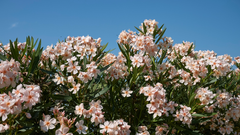
All parts of the plant are poisonous due to toxic cardenolides. The toxic compounds can cause severe heart problems or even be deadly to our furry pals if ingested.
Tulips

Tulips contain two toxic alkaloid compounds called Tulipalin A and Tulipalin B which can cause vomiting, diarrhea, and even death if ingested. All parts of the plant contain the toxins, but the bulb is where the toxins are the most concentrated.
Lilies
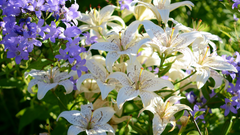
Colchicine alkaloids in lilies are extremely toxic to cats and dogs. Even small ingestions, like licking pollen off of hair during grooming or drinking water from a vase containing lilies, can be problematic. These toxins can cause damage to the blood cells, organ failure, and eventually death if left untreated, so it's best to keep your dog away from lilies altogether. This includes cut flowers and bouquets!
Rhubarb
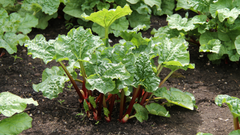
Even though this plant does produce delicious fruit, the leaves and stems are highly toxic to dogs. The leaves of the rhubarb plant contain oxalic acid which can cause tremors, kidney failure and coma. Symptoms of ingestion include burning and irritation of the mouth, throat, and digestive tract.
Sago Palm
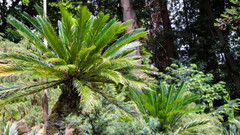
Sago palms contain cycasin, which is the active toxic agent resulting in severe liver failure in dogs. Symptoms of ingestion can include vomiting, diarrhea, and jaundice.
Wild Mushrooms

While not all wild mushrooms are toxic, it can be difficult to tell which ones are safe and which are not. If you suspect your dog has ingested a wild mushroom, it's important to seek veterinary care immediately.
Contact risk:
Oleander
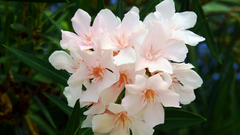
Another reason to avoid this plant, beautiful as it may be, is the risk of contact dermatitis. Contact with the sap is especially irritating and can cause quite severe skin reactions.
Tradescantia
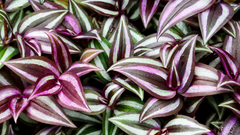
These plants don't contain toxins, per se, but a component on the leaves is a common cause of contact allergies in dogs. The skin overreacts causing irritation and may ultimately lead to dermatitis.
Stinging nettle

The leaves and stems of the nettle plant are covered in hair-like appendages that administer histamine when in contact with exposed skin. Dogs with long, thick hair coats are less at risk than dogs with short, thin hair, but even so areas with less hair coverage, like the paw pads, lips, nose and belly can be affected. Redness, swelling, pain and itching are signs of nettle exposure.
Of course, these lists are not exhaustive, but include some of the most common plants you may encounter on your everyday neighbourhood walk. By knowing more about these potentially harmful plants, flowers, and wild mushrooms, you can give your dog the gift of a healthy and safe walk. If you ever have any concerns or suspect your pup may have ingested something toxic, don't hesitate to reach out to your veterinarian for help immediately. Keeping our furry friends safe and happy is always worth it!